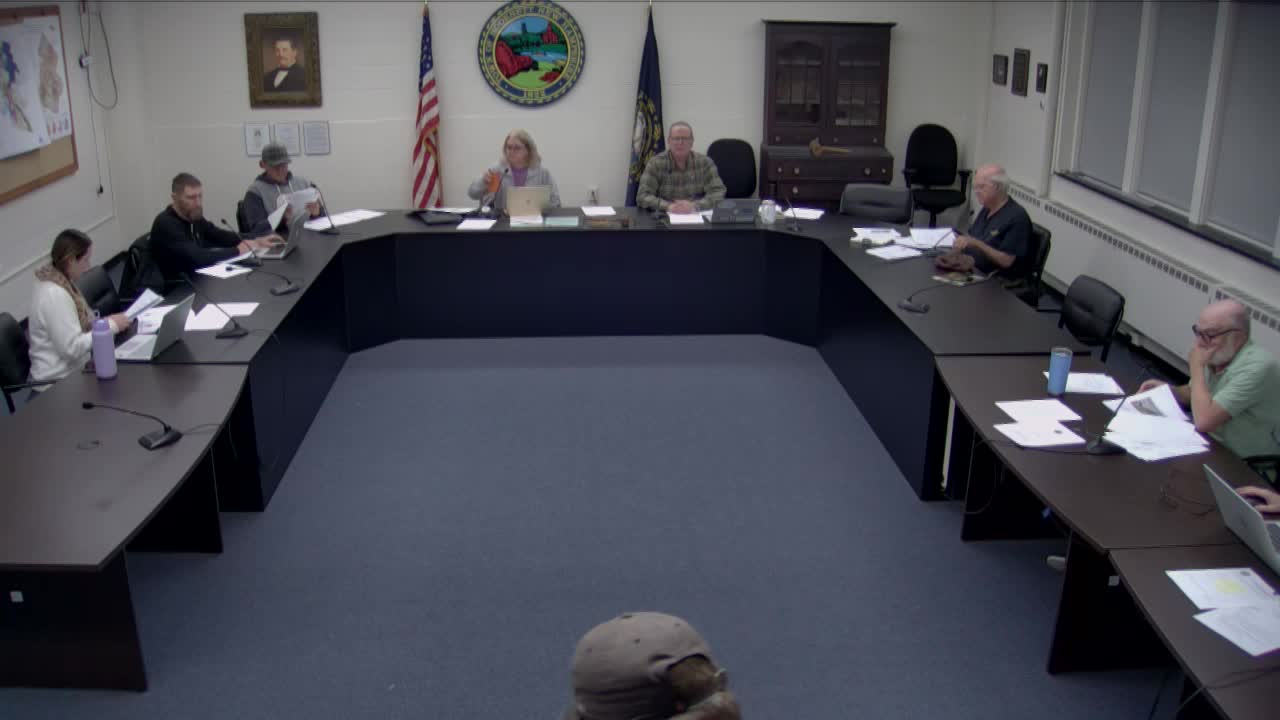Hooksett experts describe wetland restoration at 325 Hackett Hill; commission pauses formal comment to review original plan
November 10, 2025 | Hooksett, Merrimack County , New Hampshire
This article was created by AI summarizing key points discussed. AI makes mistakes, so for full details and context, please refer to the video of the full meeting. Please report any errors so we can fix them. Report an error »

Damon Burt of Fraggle Rock Environmental told the Hooksett Conservation Commission that the property owner has undertaken restoration work aimed at reversing prior fill and berming at 325 Hackett Hill Road. "DES approved that initial or the wetland restoration plan on June 12," Burt said, and the firm submitted an initial monitoring report documenting staged removal of gravel, installation of culverts for access and seeding for stabilization.
Burt said much of the site remains ponded and that the effort is a work in progress: the firm seeded and mulched wetland areas and proposes a spring planting of more than 30 trees and shrubs — including red maple, witch‑hazel and highbush blueberry — once elevations are more stable. He described DES involvement and a site visit Oct. 23: "They came out and walked it, and they were comfortable with the crossing layout." He also said the restoration was intended to reestablish hydrology and encourage native wetland species rather than create a persistent open pond.
Commissioners pressed on hydrology and durability of culverts, asking whether crossings were sized to 100‑, 200‑ or 500‑year events and where post‑restoration flows will travel. Burt said the design follows standard practice and the work was sized to a 100‑year event with multiple culverts: "Those are easily a 100," he said, while acknowledging he did not have watershed numbers on hand and offered to provide them later.
A separate thread of discussion focused on whether the present restoration and proposed access matched an earlier plan the property owner submitted to the planning board. One commissioner said the current work looked substantially different from the originally approved plan and urged the commission to review planning‑board minutes and the original plan set before issuing formal comments. After debate the commission voted to table its advisory comment and requested that members examine the original planning‑board approval before the Dec. 8 meeting.
The commission also discussed monitoring: Burt said he plans an interim spring report after planned plantings and a follow‑up report by the DES date already set in the file. The commission asked whether the landowner will retain a certified wetland scientist for monitoring through two growing seasons; Burt said the landowner would be required to hire someone and the team expects monitoring through 2026 and 2027.
Next steps: the commission will retrieve the original planning‑board materials and minutes to compare the prior approvals with the current restoration plan and will revisit the item Dec. 8; Burt said he would provide requested hydrology numbers and interim monitoring documents as available.
Burt said much of the site remains ponded and that the effort is a work in progress: the firm seeded and mulched wetland areas and proposes a spring planting of more than 30 trees and shrubs — including red maple, witch‑hazel and highbush blueberry — once elevations are more stable. He described DES involvement and a site visit Oct. 23: "They came out and walked it, and they were comfortable with the crossing layout." He also said the restoration was intended to reestablish hydrology and encourage native wetland species rather than create a persistent open pond.
Commissioners pressed on hydrology and durability of culverts, asking whether crossings were sized to 100‑, 200‑ or 500‑year events and where post‑restoration flows will travel. Burt said the design follows standard practice and the work was sized to a 100‑year event with multiple culverts: "Those are easily a 100," he said, while acknowledging he did not have watershed numbers on hand and offered to provide them later.
A separate thread of discussion focused on whether the present restoration and proposed access matched an earlier plan the property owner submitted to the planning board. One commissioner said the current work looked substantially different from the originally approved plan and urged the commission to review planning‑board minutes and the original plan set before issuing formal comments. After debate the commission voted to table its advisory comment and requested that members examine the original planning‑board approval before the Dec. 8 meeting.
The commission also discussed monitoring: Burt said he plans an interim spring report after planned plantings and a follow‑up report by the DES date already set in the file. The commission asked whether the landowner will retain a certified wetland scientist for monitoring through two growing seasons; Burt said the landowner would be required to hire someone and the team expects monitoring through 2026 and 2027.
Next steps: the commission will retrieve the original planning‑board materials and minutes to compare the prior approvals with the current restoration plan and will revisit the item Dec. 8; Burt said he would provide requested hydrology numbers and interim monitoring documents as available.
View full meeting
This article is based on a recent meeting—watch the full video and explore the complete transcript for deeper insights into the discussion.
View full meeting
